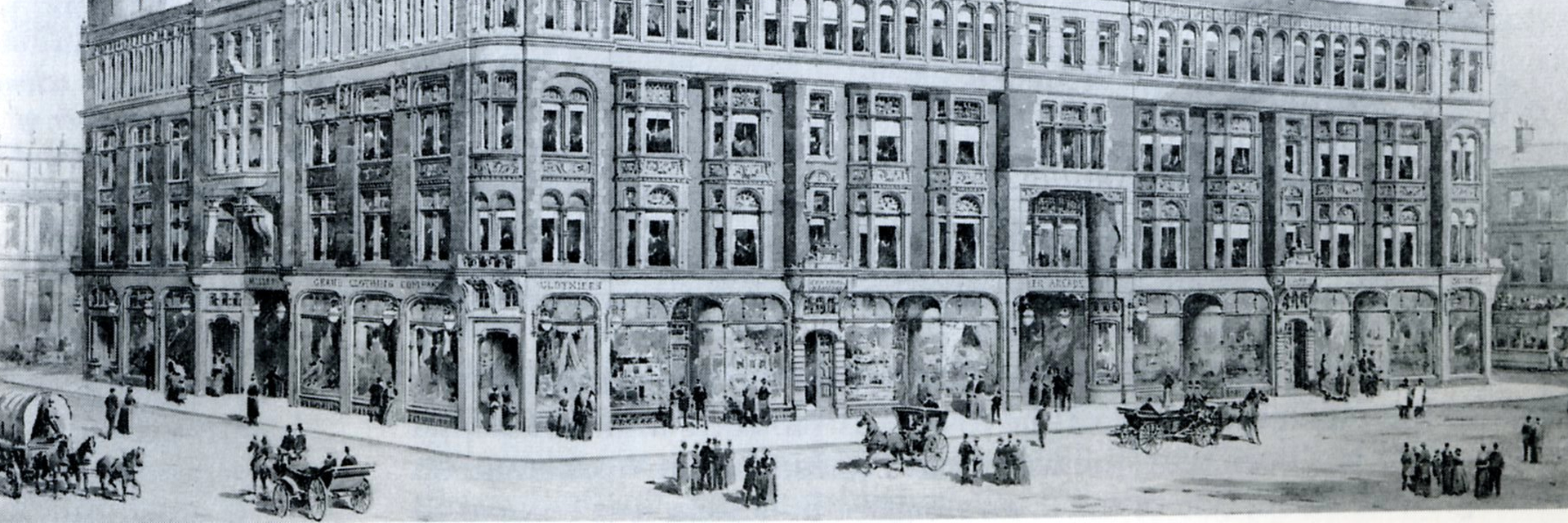
Nathaniel Miller
1849 – 1933 | Derby House, 12 Winckley Square

Nathaniel Miller rose from very humble beginnings to be Mayor of Preston in 1910 -11. He was involved for 45 years in public life. He and his family were very influential in the life of Preston, particularly during the late 19th and early 20th centuries. He had a significant impact on health care as well as his civic roles.
He was a successful dental surgeon despite a few difficulties, including fatalities in his dentist chair. His rise up the social ladder and his family’s advancement appear to have been relatively smooth. He was clearly held in high esteem within his social and political circles.
He is another example of how it was possible at the time to move from obscurity to great wealth within a generation. As with James Todd, part of the rapid rise is due to being in an profession (in this case dentistry) in which great improvements had occurred and, more importantly, an industry which the state had decided to regulate. This effectively shut out competitors who, in earlier times, would have been able to offer dental ‘treatments’.
Preston’s chief legacy from Nathaniel Miller however, is the Miller Arcade. It is one of the most cherished buildings in the city and is still used as a place of business, pleasure and socialising.
Nathaniel’s Early Years
Nathaniel was born in Rochdale to Thomas and Harriet in 1849 but was baptised at St John’s Church in Preston later in the year. The family lived in Hopwood Street which is in the centre of Preston, between the prison and St Paul’s Square. In his early years Nathaniel moved house several times, we assume because his father ‘followed the work’.
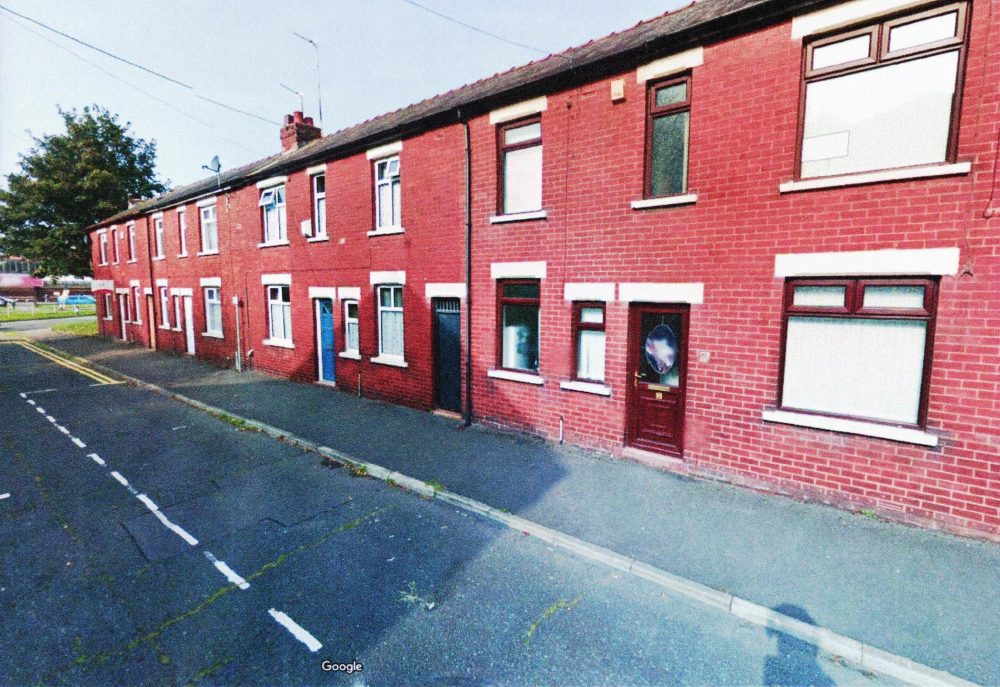


By the time of the 1851 Census, the family had moved to St Paul’s Road in the Deepdale area of Preston. Thomas and Harriet’s eldest son, Thomas, 8, had been born in New Jersey, suggesting they must have had a spirit of adventure. They spent some time in America before returning to Ashton-under-Lyne where Henry, the second son, was born in 1847. They didn’t stay there long as Nathaniel was born two years later in Rochdale. Thomas’ occupation in 1851, although hard to read, appears to have been a Patent Sizer of Cotton Yarn.
By 1861 they lived at 17, Victoria Street between Moor Lane and Brook Street, in the area which now contains numerous university buildings. The sons were still in the family home with the addition of a three year old brother, George. Thomas Senior was a Cotton Yarn Dresser, Nathaniel, 12, a scholar and Henry, 14, an Office Boy. The eldest son, Thomas, 18, was not given an occupation in the 1861 Census.
The family moved again and in 1871 they were living at 9, London Road close to the town centre in a building which was also a Chemist Shop. Nathaniel, 22, was a Chemist and Druggist running the business. His father was still working in the cotton trade as a Lodge Keeper. The only other son still in the family home was George, 12, a Draper’s Shop Boy.
Nathaniel’s marriage to Jane Gornall 1872

Nathaniel, 23, married Jane Gornall, also 23, on 21 May 1872 at Christ Church in Preston. Jane’s father Richard was a Carrier and, at the time, Nathaniel’s occupation was a Chemist.
Nathaniel becomes a Dentist
The Dentist Act of 1878 restricted the title of ‘Dentist’ or ‘Dental Surgeon’ to registered practitioners. Only those who could show that they had practised for 5 years were allowed to register. The Mannex Directory for Preston for 1873 listed him as a Chemist and Dentist with premises at London Road and at 141, New Hall Lane. This shows that Nathaniel must have been working as a dentist from at least 1873.
Therefore Nathaniel took up dentistry soon after they were married. The Dentists’ Register shows that he was in practice at 11, London Road on 10 September in 1878 and had been in practice (with a pharmacy) before 22 July 1878.
The British Dental Association provides background on the early regulation of Dentists.
‘Dentists Registers (1879 – 2005). The register was started in 1879 as a result of the Dentists Act of 1878. This was the first legislation which aimed to restrict the giving of dental treatment and advice to qualified dentists. The LDS (Licentiate in Dental Surgery) of the Royal College of Surgeons of England was the first professional dental qualification and was first awarded in 1860. Prior to this most practitioners learnt their skills through apprenticeship, formal or informal. Practitioners who could prove they had already been involved, prior to 1879, in the bona fide practise of dentistry, (alone or in conjunction with medicine, surgery or pharmacy) were allowed to register on the basis of their experience. Only dentists listed in the Dentists Register could use the protected titles of ‘surgeon dentist’ or ‘dental surgeon’.’
The Royal College of Surgeons’ description of the situation in Scotland at the time is helpful for our understanding of how Nathaniel moved from being a chemist to a dentist:
‘In the middle of the 19th Century the practice of dentistry in Scotland was completely unregulated. For the man in the street it was difficult to know who was a skilled operator and who was not.
There were several grades of practitioners, surgeons who practised dentistry as a speciality, rightly named surgeon dentists and others who greatly outnumbered them including chemists and druggists, the mechanically trained and high percentage of blatant charlatans. There was no organised training of dentists.’
Upward Mobility
By 1881 Nathaniel and Jane lived at Darwen Cottage in Walton-le-Dale. He was a Dentist and Druggist employing one man and two boys. They also had 3 children: Charles, 5, Agnes Harriet, 3, and Jane Maud, 4 months. Nathaniel’s business was obviously doing well because they had three servants; indicating that the family was starting to climb the social ladder. The servants were Ellen Laythorne and Alice Cousins from Appleby in Westmorland and William March from Stockport. Female servants often came from beyond Preston. Work in the mills was better paid than working in ‘service’ so local women in Preston had the option of mill work in a way that ‘country women’ did not.
The 1881 Mannex Directory showed that his business was expanding, giving locations at 11 and 12, London Road as well as 141, New Hall Lane. An 1882 telephone directory also showed that Nathaniel had a residence on Avenham Colonnade, a series of desirable Georgian town houses to the south of Winckley Square.

Nathaniel was one of the early adopters of telephones. His number was Preston 47. The Barrett’s Directory for 1885 showed more progress for the business with a town centre location for the practice at 95, Fishergate as well as 11, London Road and 141, New Hall Lane. This directory also gave the initials LDS after his name indicating his Licentiate in Dental Surgery, and his occupation as Dental Surgeon.
Family move to Fishergate


By the time of the 1891 Census the family was living at 95, Fishergate where Nathaniel, 42, also ran his dental practice. Their children were Thomas Henry, a medical student, 18, Nathaniel, 16, Arthur, 8, Richard, 6, and Marie, 1. Some of the children had not appeared in the 1881 Census. Once again, they had three servants, Elizabeth and Frances Spooner from Appleby in Westmorland and Ellen Bailey from St Michaels near Garstang.
The 1892 Barrett’s Directory showed that Nathaniel’s practice and business concerns were ongoing and also that he continued to move up the social scale. Rather than living at the same location as his practice, his residence had changed to a house called ‘Altadore’ in the desirable suburb of Fulwood. Millicent was born in 1895.
Nathaniel Miller & Sons
In the 1898 Barrett’s Directory the practice at 95, Fishergate had become a family concern with the title of N Miller and Sons. Nathaniel Miller Junior was also working in dentistry and based on the premises. Social and civic progress had also continued. Nathaniel Senior was by then a Justice of the Peace.
By the 1901 census the Miller family was living at 12, Winckley Square. Nathaniel had exchanged the suburb location of Fulwood for one of the town’s most sought after areas.
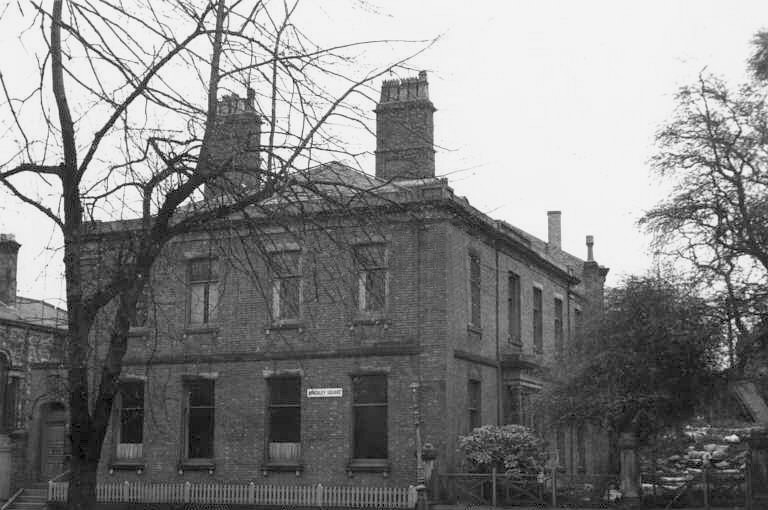
Nathaniel and his son Thomas were both Dental Surgeons and Arthur, 18, was also entering the dental profession and was listed as a Dental Student. They had only one servant, Alice Ronson from Pilling. The 1901 Barrett’s Directory listed both Nathaniel Junior and Thomas as working in the family practice at 95, Fishergate.
Further Barrett’s Directories for the early part of the century continued to show the practice at 95, Fishergate with Thomas and his father based there. By 1905 Thomas had moved to another impressive location at 2, Avenham Colonnade and by 1910 he was beginning to be an important figure in the town, having become the Dental Surgeon to the Royal Infirmary.
By 1907 Nathaniel had moved house again, round the corner from 12, Winckley Square to 12, Ribblesdale Place. In 1911 four of the children were still at home and son Richard was a Surgeon Dentist assisting in the family business. They had one servant; Winifred Price from Warrington. Subsequent Barrett’s Directories show that the Miller dental practice remained at 95, Fishergate until the late 1930s although Nathaniel appears to have stopped practising by 1922.
By 1940 none of the Millers was listed as a dentist in Preston.

Hiccup to a Career in Local Politics
Nathaniel’s time as a representative in local politics appears to have begun in the municipal elections of November 1881 when, in what the Preston Chronicle of 5 November described as ‘the only real contest of the election’, he was elected as a Conservative candidate for Park Ward.
There was a strange occurrence in the Parliamentary elections of February 1882; a demand that Nathaniel be prosecuted in a case related to voting irregularities. The Chronicle of 18 March 1882 reported the case as ‘Alleged Illegal Voting by a Town Councillor’. The case seemed to turn on the offence of ‘personation’ (i.e. voting as someone else without authority). In this case the Mayor, Edward Garlick, adjudicated that he was not justified in instigating a prosecution.
The article goes on to report that a Mr Simpson, the unsuccessful candidate in the election, had requested the case be brought. As the Mayor had refused, Mr Simpson would then seek a ‘mandamus’ to force the Mayor to institute proceedings.

When the case was examined further it proved to be highly unusual to the judges. It was suggested that the Mayor should have pursued the case in the first place and not used his discretion. The Manchester Times of 20 May 1882 reported that subsequently the decision of the Mayor was upheld and the request for a ‘mandamus’ failed.
In the Scandalous Stories section of this website you can read Keith Johnson’s accounts of the patients who died in Nathaniel Miller’s dentist chair. Fortunately he was exonerated by the inquests and these unhappy accidents did not affect his professional standing or his political career.
A Long Career in Local Politics
It was just as well for Nathaniel the court upheld the Mayor’s decision. It could have brought a sudden end to what turned out to be a long career in local politics. In the same year, 1882, he was part of the Guild organising committee.
Nathaniel’s career in local politics might have been helped by his involvement in Freemasonry. He joined the Lodge of Concord in Preston in 1885.
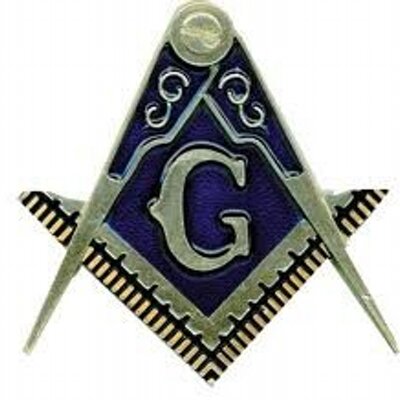
Nathaniel’s political life culminated in him becoming Mayor of the borough in November 1910. His speech, as reported in the Preston Guardian of 9 November 1910 when he was newly elected, is interesting as he clearly seeks to present himself as a rather humble and devout man:
‘He deeply appreciated the privilege of being alive that day to be made the Mayor of the ancient borough of Preston. He had spent a good many happy years in the town. God had blessed him with a large family, and in many ways, but he thanked him for the blessings of that day, and hoped he would never forget to thank Him daily. He felt sure that God would direct him if He were asked in a proper spirit and would see that during the coming year they would make progress. He thanked them all from the bottom of his heart for the privilege accorded to him.’
The Miller Arcade
Nathaniel’s enduring contribution to life in Preston is the Miller Arcade, a building with which most people in the city will be very familiar.
A post on ‘Tumblr’ from the Friends of the Harris describes how the Miller family had tried unsuccessfully to sell land, which the family owned in the Shambles area near the Town Hall, to the Corporation. Instead they subsequently worked on developments themselves.

In 1895 Nathaniel Miller held a competition for the commission of his new building. The project was undertaken by an Edwin Bush of Essen, Nichol and Goodman of Birmingham. Bush modelled the building on London’s Burlington Arcade. He later went on to be a partner in the firm of Bush, Hope and Tasker in Preston.

The Preston Guardian of 22 June 1895 reported on the drawings for the proposed buildings and expressed Preston’s gratitude to Nathaniel Miller:
‘To Mr N Miller, Preston is indebted for an undertaking which will architecturally be an ornament, and one everyone hopes will be of lasting and profitable value to the borough. The building was to consist of ‘a fireproof block of shops, offices, two licensed houses, clothier’s shop, auction room, caretaker’s apartments, offices etc…’
The first brick of the building was laid by Nathaniel’s wife, Jane, in a ceremony that took place on 18 February 1896. The Guardian of 1 August 1896 reported on the laying of the foundation stone, a ceremony which was seen to be of great civic significance and attended by ‘a large and representative gathering of local businessmen’ along with Alderman W H Woods and several other members of the Town Council. In addition, ‘many ladies also graced the proceedings’! A second stone was laid by Nathaniel’s son, Thomas, and the assembled company retired for an excellent meal at Mr Catterall’s restaurant on Church Street.
The building was opened in 1899

In the early 20th century Turkish Baths were installed; they remained open until 1947.

The building still retains many of its original functions and, although the Baths have gone, it provides a home for shops, offices, eateries and bars. The interior still contains the original shop fronts.


Death of Jane and Nathaniel
The family remained at their beautiful house in Ribblesdale Place overlooking Avenham Park. Jane died in 1915 and Nathaniel subsequently married Annie Codrington in Bristol in 1917. Nathaniel and Annie lived at Ribblesdale Place where Nathaniel died on 28 January 1933. He left the considerable sum of over £80,000 in his will (over £5.5 million today), confirming that his businesses thrived during his lifetime.
Nathaniel’s funeral was at St George’s Church
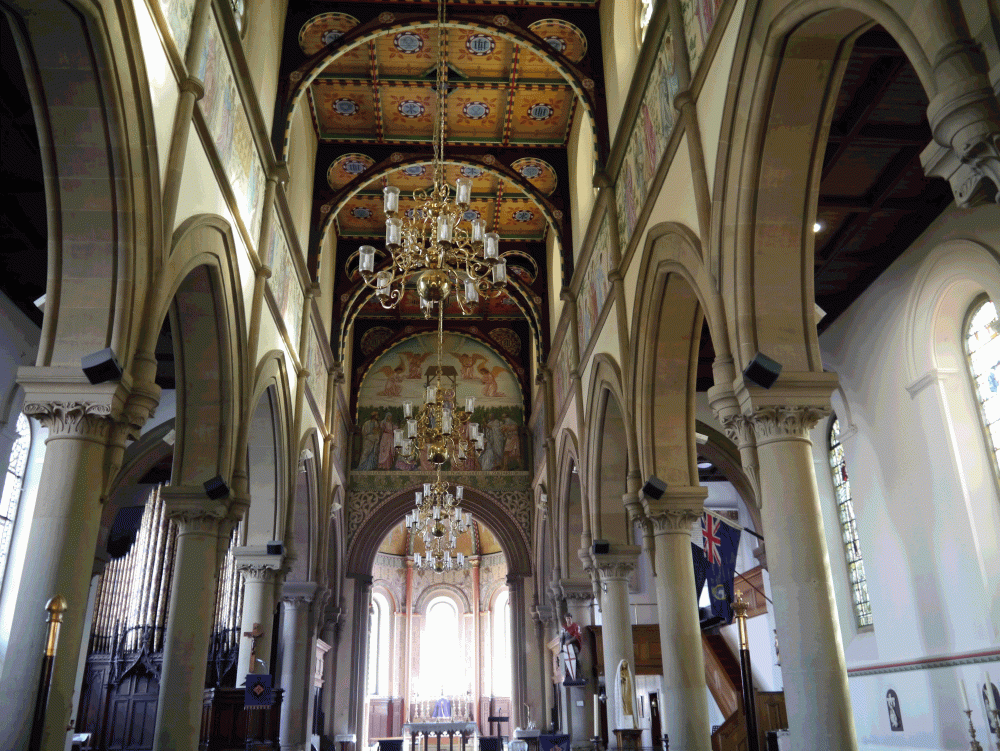
The esteem in which he was held during his time as Mayor and as a councillor is evident by the large number of civic dignitaries who attended his funeral, twenty-three years after his year of office as Mayor. This included the Mayor, Alderman Derham and his wife; numerous other aldermen and councillors; the chief constable; the chairman of the Royal Infirmary management board; a member of the Harris Orphanage Council; members of the British Dental Association; several senior members of the military and a representative of the Preston Conservative and Unionist Association.
A report was published in the Lancashire Daily Post January 30th 1933 MR NATHANIEL MILLER DEAD: A Man who made a Preston Arcade. His wife Annie died later in the same year after suffering a seizure.
A Family of Dentists
As we have seen, Nathaniel had a large family and several of his sons took up dentistry. Both Thomas and Nathaniel Junior were very successful in following their father’s line of work.
When son Thomas died in 1938 the Lancashire Daily Post described him as ‘one of the most distinguished dental surgeons in the North of England’. He had been the dental surgeon to the Royal Infirmary, the Harris Orphanage and St Joseph’s Hospital.
Nathaniel Junior moved to the south west of England. When he died in 1947, he was living in Bath and The Bath Weekly Chronicle stated that their town ‘had lost a great personality’. He had studied under specialists in America and practised in New Zealand and was a friend of a celebrated local author, Arthur W Marchmont, who had advised him to set up a practice in the area. He had many distinguished patients including Queen Mary and the Duke of Connaught. Nathaniel, Nathaniel Junior and Thomas Henry Miller all appear on the Dentists’ Register of 1898.
Women and dentistry
A career in Dentistry would not really have been an option for any of Nathaniel’s daughters. From 1878 they would have had to undertake the LDS and register but dental schools would not accept women. The first woman to qualify as a dentist in Britain was Lilian Lindsay née Murray who qualified in Edinburgh in 1895 .It was not until 1912 that a Lily Fanny Pain became an LDS in England. Indeed, undertaking any form of work, professional or otherwise, would have been difficult for women of their class and position. They would generally have been expected to lead lives within the domestic sphere and would not have had a financial imperative to work. Although they would have been secure, by today’s standards it would have been a life of limited experiences and opportunities.
At least two of Nathaniel’s daughters never married. Both Millicent, 94, and Agnes, 79, can be found on the 1939 Register sharing a house on Longridge Road on the outskirts of Preston. Millicent died in Cornwall in 1973, predeceased by her elder sister Agnes who had died in 1957 at St Joseph’s Hospital, Mount Street in Preston.
Useful Sources
Online sources: – Ancestry, Find My Past, The Times Digital Archive and British Library 19th Century Newspapers which are available through Lancashire Libraries and Lancashire Archives.
The Trade Directories cited in the text are available through Lancashire Archives and Lancashire Libraries
The Preston Guardian and other local newspapers are available on microfilm at the Lancashire Archives
Census and Certificates courtesy of National Archives.
By Andrew Walmsley